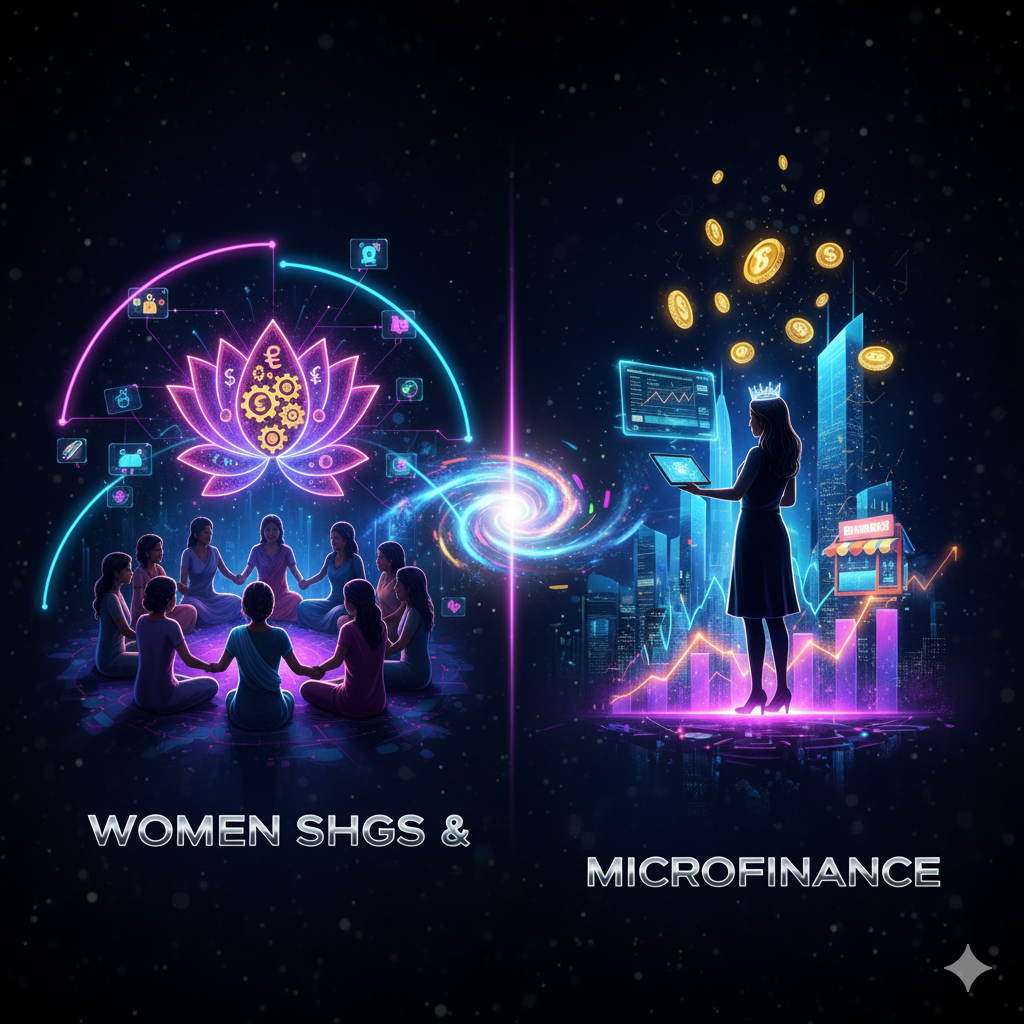Introduction
Sustainable development is a crucial global challenge that requires concerted efforts at both national and international levels. In India, a country with a population of over 1.4 billion people, rapid economic growth, and severe social inequalities, sustainable development has become a cornerstone of the nation’s development strategy. The role of international financial institutions such as the World Bank has been pivotal in fostering India’s development goals, particularly in the context of poverty alleviation, environmental sustainability, and economic growth. Since its engagement with India, the World Bank has provided both financial resources and technical expertise to help India navigate the complex terrain of development.
This article critically examines the role of the World Bank in India’s sustainable development, exploring both its contributions and challenges in addressing India’s multifaceted developmental goals.
Historical Context of World Bank’s Engagement in India
India became a member of the World Bank in 1944 and since then has been a significant recipient of the World Bank’s resources. Over the decades, India has benefitted from the World Bank’s financial aid in various sectors, including agriculture, education, energy, health, and infrastructure. The World Bank’s interventions have evolved in response to India’s changing priorities, from fostering industrial growth in the early years to addressing environmental sustainability and social equity today.
World Bank’s Contributions to Sustainable Development in India
- Poverty Alleviation and Rural DevelopmentPoverty alleviation is central to India’s sustainable development agenda, and the World Bank has played a significant role in supporting initiatives aimed at reducing poverty. A large portion of India’s population resides in rural areas where poverty levels remain high, and access to basic services like healthcare, education, and sanitation is limited. The World Bank’s involvement in rural development has focused on enhancing livelihoods, providing access to financial resources, and improving infrastructure.
- National Rural Employment Guarantee Act (NREGA): The World Bank has supported the NREGA, which guarantees 100 days of employment per year to rural households. This program has helped reduce poverty in rural India by providing stable income and fostering rural infrastructure development.
- Self-Help Groups (SHGs): The World Bank has facilitated the establishment of Self-Help Groups in India, particularly in rural areas. These groups, which primarily consist of women, promote financial inclusion and empowerment by providing small loans and training to members. SHGs have contributed to poverty reduction by improving access to credit and enabling women to participate in economic activities.
- Rural Infrastructure: The World Bank has supported the development of rural infrastructure such as roads, irrigation systems, and access to clean water. The Pradhan Mantri Gram Sadak Yojana (PMGSY), which aims to provide all-weather roads to rural areas, has benefited from World Bank funding and has been instrumental in improving connectivity and economic opportunities in rural India.
- National Rural Employment Guarantee Act (NREGA): The World Bank has supported the NREGA, which guarantees 100 days of employment per year to rural households. This program has helped reduce poverty in rural India by providing stable income and fostering rural infrastructure development.
- Environmental Sustainability and Climate ChangeAs one of the world’s fastest-growing economies, India faces significant environmental challenges that threaten long-term sustainability. The World Bank has played an important role in India’s efforts to balance economic growth with environmental protection, focusing on issues such as air pollution, water scarcity, land degradation, and climate change.
- Renewable Energy Initiatives: India’s commitment to clean and renewable energy has received support from the World Bank through various projects aimed at increasing the adoption of solar energy, wind power, and hydropower. The World Bank has provided financial resources for the development of solar parks, the installation of solar rooftops, and the expansion of wind energy capacity. In particular, the National Solar Mission, which aims to establish India as a global leader in solar energy, has benefited from World Bank support.
- Climate Resilience Programs: The World Bank has supported India’s efforts to build climate resilience, particularly in vulnerable regions that are prone to extreme weather events such as floods, droughts, and cyclones. Programs such as the National Adaptation Fund for Climate Change (NAFCC) and the National Action Plan on Climate Change (NAPCC) have received technical assistance and funding from the World Bank to help India mitigate and adapt to climate change impacts.
- Sustainable Urbanization: Urbanization in India is occurring at an unprecedented rate, with many cities facing problems related to pollution, water management, and waste disposal. The World Bank has supported urban sustainability initiatives through projects focused on smart cities, waste management, and clean water supply. The Atal Mission for Rejuvenation and Urban Transformation (AMRUT) is one such example, where the World Bank has provided assistance in improving urban infrastructure and creating sustainable, livable cities.
- Renewable Energy Initiatives: India’s commitment to clean and renewable energy has received support from the World Bank through various projects aimed at increasing the adoption of solar energy, wind power, and hydropower. The World Bank has provided financial resources for the development of solar parks, the installation of solar rooftops, and the expansion of wind energy capacity. In particular, the National Solar Mission, which aims to establish India as a global leader in solar energy, has benefited from World Bank support.
- Health and EducationIndia’s development objectives are closely tied to improvements in human capital, with a focus on healthcare and education. The World Bank has provided substantial support to improve the quality and accessibility of these critical services, which are fundamental to achieving sustainable development.
- Health Sector Reforms: The World Bank has been involved in various health sector reforms aimed at improving the accessibility and quality of healthcare services in India. The World Bank has supported initiatives to combat malnutrition, expand immunization coverage, and improve maternal and child health. Programs such as the National Health Mission (NHM), which focuses on providing affordable healthcare in rural areas, have benefitted from the World Bank’s financial assistance and technical guidance.
- Education Programs: Education is central to India’s development, and the World Bank has been involved in multiple projects to enhance educational outcomes, particularly at the primary and secondary levels. The World Bank’s support has included initiatives to improve school infrastructure, teacher training, and learning outcomes. The Sarva Shiksha Abhiyan (SSA) and the Rashtriya Madhyamik Shiksha Abhiyan (RMSA), both of which aim to provide universal education, have received technical and financial assistance from the World Bank.
- Health Sector Reforms: The World Bank has been involved in various health sector reforms aimed at improving the accessibility and quality of healthcare services in India. The World Bank has supported initiatives to combat malnutrition, expand immunization coverage, and improve maternal and child health. Programs such as the National Health Mission (NHM), which focuses on providing affordable healthcare in rural areas, have benefitted from the World Bank’s financial assistance and technical guidance.
- Infrastructure DevelopmentInfrastructure plays a key role in India’s sustainable development, as it underpins economic growth and social development. The World Bank has been a critical partner in funding infrastructure projects that promote connectivity, improve the quality of life, and ensure long-term sustainability.
- Transportation: The World Bank has been involved in financing key transportation infrastructure projects, including the development of highways, railways, and ports. These projects aim to enhance connectivity, reduce travel time, and promote trade. The Eastern Peripheral Expressway, which will ease traffic congestion around Delhi, is one such example of a major infrastructure project supported by the World Bank.
- Water and Sanitation: Access to clean water and sanitation is fundamental to sustainable development. The World Bank has supported projects focused on water conservation, irrigation systems, and wastewater treatment. The Jal Jeevan Mission, which aims to provide clean drinking water to rural households, has received assistance from the World Bank.
- Transportation: The World Bank has been involved in financing key transportation infrastructure projects, including the development of highways, railways, and ports. These projects aim to enhance connectivity, reduce travel time, and promote trade. The Eastern Peripheral Expressway, which will ease traffic congestion around Delhi, is one such example of a major infrastructure project supported by the World Bank.
Challenges in World Bank’s Engagement with India
While the World Bank has made significant contributions to India’s sustainable development, there are several challenges and criticisms that have emerged over the years:
- Project Implementation and Monitoring: One of the key challenges in India’s partnership with the World Bank is the slow pace of project implementation. Bureaucratic delays, inefficiencies, and political hurdles often result in the slow execution of projects, which can hinder the intended impact. Furthermore, the effectiveness of monitoring and evaluation mechanisms has been questioned, with concerns about whether the projects are truly meeting the needs of marginalized communities.
- Debt Sustainability: India’s borrowing from the World Bank and other international institutions has raised concerns about the long-term sustainability of its debt. While World Bank loans are often concessional, the increasing debt burden could undermine India’s financial independence and restrict its ability to invest in other critical areas of development.
- Environmental Concerns: Despite the World Bank’s focus on environmental sustainability, some of its infrastructure projects have been criticized for causing environmental degradation. For example, large-scale infrastructure projects, including dams and highways, have raised concerns about their environmental impact, displacement of local communities, and loss of biodiversity.
- Social Equity: While the World Bank has supported poverty alleviation programs, the impact of these initiatives on social equity remains debated. Critics argue that many of the World Bank’s projects have disproportionately benefited urban elites, while rural and marginalized communities have not gained equally from development initiatives.
Conclusion
The World Bank has played a pivotal role in supporting India’s sustainable development by providing financial resources, technical expertise, and policy advice across key sectors such as poverty alleviation, environmental sustainability, health, education, and infrastructure development. India’s partnership with the World Bank has contributed significantly to the country’s growth and development, particularly in addressing critical challenges such as poverty, climate change, and social inequality.
However, challenges remain in terms of project implementation, debt sustainability, and ensuring that the benefits of development are equitably distributed. Moving forward, it will be essential for the World Bank and India to focus on improving the effectiveness of development programs, ensuring environmental sustainability, and addressing the needs of the most vulnerable sections of society.
The partnership between India and the World Bank remains vital in shaping the country’s journey toward achieving its long-term sustainable development goals, and continued collaboration will be crucial in addressing the emerging challenges of the future.




